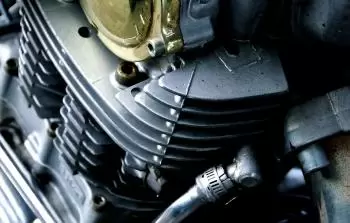
Reciprocating engines can be classified in many different ways. The main forms of classification are the following:
- According to the arrangement of the cylinders in the engine
- According to the displacement
- According to the compression ratio
- According to the ratio of diameter and stroke
- According to the number of movements of each cycle
Engine types according to cylinder arrangement
A common way to classify the reciprocating engine is to use the number and arrangement of the cylinders. Thus we have:
- Linear reciprocating motor. The in-line engine is an engine with all the cylinders aligned in the same row, without displacement. They have been used in motorcycles, automobiles, locomotives, and airplanes. It is typically available in 2-, 4-, 5- and 6-cylinder configurations.
- Alternative V engine. The V engine is an arrangement where the cylinders are grouped into two blocks or rows of cylinders, where they form a letter V. All the cylinders converge on the same crankshaft. In these engines the intake air is sucked inside the V and the exhaust gases expelled from the sides.
- Reciprocating radial engine. It is also known as a star motor. This alternative engine is a type of arrangement in which the cylinders are located radially with respect to the crankshaft, forming a star.
Classification of reciprocating engines according to displacement
Another way of classifying reciprocating engines is to do it depending on the displacement.
Displacement is the total volume of gas displacement by the pistons moving in the cylinders. Displacement is usually measured in liters or cubic centimeters. In other words, displacement is the geometric volume occupied by the piston set from bottom dead center (PMI) to top (TDC), also called top dead center. The displacement gives a good measure of the work capacity that an engine can have.
Classification according to compression ratio
Another criterion for classifying the different types of reciprocating engine is to do so by their compression ratio.
The compression ratio is the ratio of the volume of the cylinder. Another way to put it would be the time the piston is at the bottom of its stroke (bottom dead center), and the volume when the piston is at the top of its stroke (top dead center).
This compression ratio affects the performance of Stirling engines and internal combustion engines. In the case of internal combustion engines, on this website we analyze the Otto cycle for the gasoline engine and the diesel cycle for the diesel engine.
Types of motor according to the ratio of bore and stroke
The bore / stroke ratio is the ratio of the diameter of the piston, or bore, to the length of the stroke within the cylinder, or stroke. Depending on this relationship we have:
- Square reciprocating motors: If this relationship is close to 1.
- Over-square reciprocating motors: If the diameter / stroke ratio is greater than 1, that is, the hole is larger than the stroke.
- Sub-square alternating motors: If the ratio is less than 1, that is, the stroke is larger than the hole.
Engine types depending on the number of cycle times
This classification of reciprocating engines depends on their duty cycle. Two types of engine are distinguished in them.
- The two-stroke engine.
- The four-stroke engine.
- The six-stroke engine. This type of cycle is very rare.
Internal combustion engines work through a sequence of intake and exhaust movements in the cylinder. These movements are repeated cyclically and an engine is said to be 2-stroke, 4-stroke or 6-stroke depending on the number of steps required to complete a cycle.